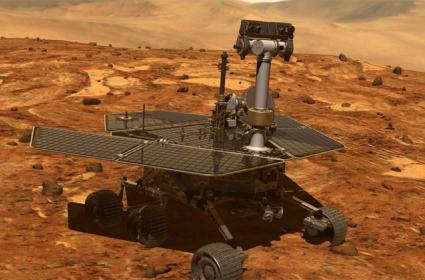NASA Optimistic About Mars Rover Recovery

Washington: NASA remains optimistic about reconnecting with the Mars Opportunity rover that has been silent for over two months due to a global dust storm enshrouding the red planet, even though the robotic explorer's operations are expected to be affected.
Since the dust storm is "decaying" -- meaning more dust is falling out of the atmosphere than is being raised back into it -- skies might soon clear enough for the rover to recharge and attempt to "phone home", NASA said in a statement.
The US space agency had performed several studies on the state of the rovers batteries before the storm, and temperatures at its location.
Since the batteries were in relatively good health before the storm, there's not likely to be too much degradation, NASA said.
Dust storms tend to warm the environment the rover should have stayed warm enough to survive, according to the team which notes that they still have reason to be optimistic.
Dust storms on Mars block sunlight from reaching the surface, raising the level of a measurement called "tau." The higher the tau, the less sunlight is available; the last tau measured by Opportunity was 10.8 on June 10. To compare, an average tau for its location on Mars is usually 0.5.
Engineers predict that Opportunity will need a tau of less than 2.0 before the solar-powered rover will be able to recharge its batteries.
A wide-angle camera on NASA's Mars Reconnaissance Orbiter will watch for surface features to become visible as the skies clear. That will help scientists estimate the tau.
Several times a week, engineers use NASA's Deep Space Network, which communicates between planetary probes and Earth, to attempt to talk with Opportunity.
The massive DSN antennas ping the rover during scheduled "wake-up" times, and then search for signals sent from Opportunity in response.
In addition, NASA's Jet Propulsion Laboratory's radio science group uses special equipment on DSN antennas that can detect a wider range of frequencies.
Each day, they record any radio signal from Mars over most of the rover's daylight hours, then search the recordings for Opportunity's "voice." When Opportunity experiences a problem, it can go into so-called "fault modes" where it automatically takes action to maintain its health. Engineers are preparing for various fault modes if they do hear back from Opportunity.
After the first time engineers hear from Opportunity, there could be a lag of several weeks before a second time as the rover will take time to fully recover.
It may take several communication sessions before engineers have enough information to take action, NASA said.
The first thing to do is learn more about the state of the rover. Opportunity's team will ask for a history of the rover's battery and solar cells and take its temperature.
If the clock lost track of time, it will be reset. The rover would take pictures of itself to see whether dust might be caked on sensitive parts, and test actuators to see if dust slipped inside, affecting its joints.
Once they've gathered all this data, the team would take a poll about whether they're ready to attempt a full recovery.
Even if engineers hear back from Opportunity, there is a real possibility the rover won't be the same.
The rover's batteries could have discharged so much power and stayed inactive so long that their capacity is reduced.
If those batteries can't hold as much charge, it could affect the rover's continued operations. (PTI)



















